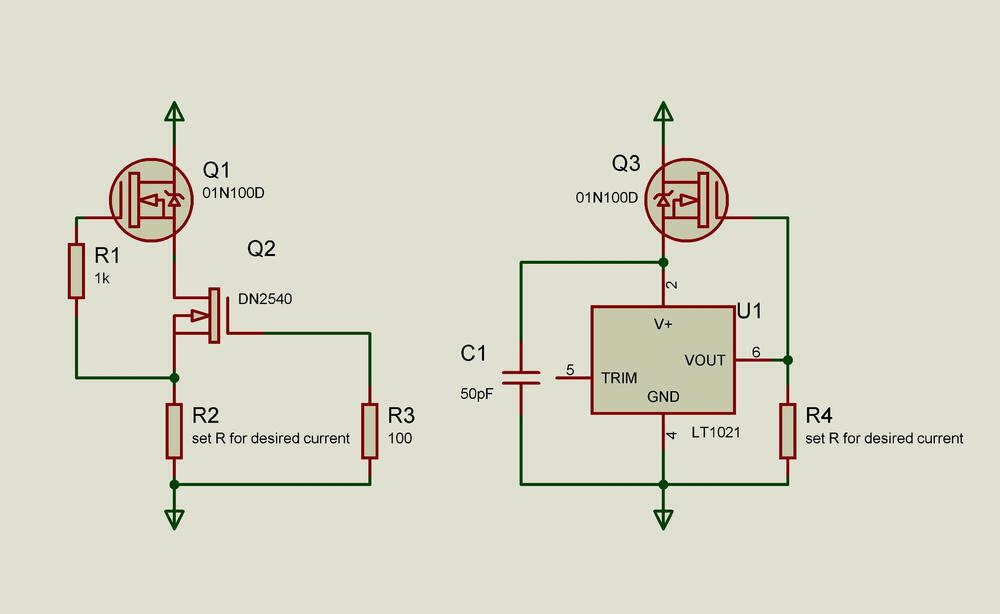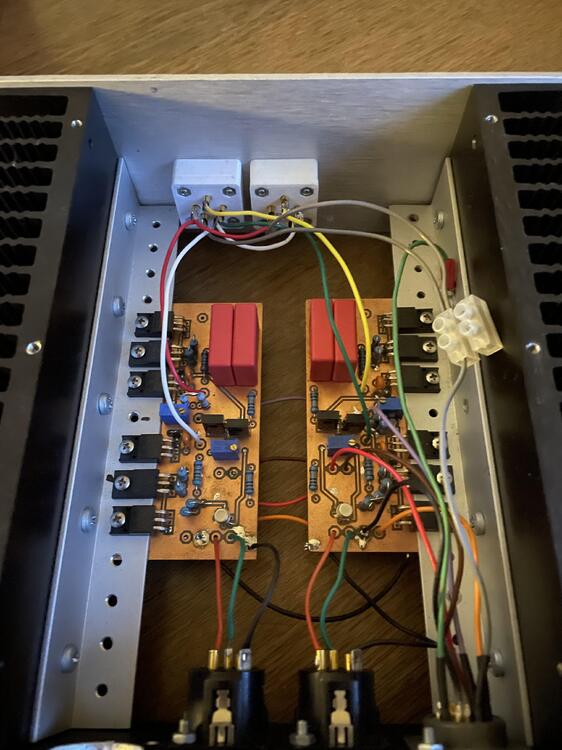-
Posts
1,530 -
Joined
-
Last visited
-
Days Won
16
Content Type
Profiles
Forums
Events
Everything posted by JoaMat
-
It’s a troublesome, difficult time – all shortages of components. KSC5026 might be replaced by STN0214 in a KGSSHV style PSU. Solder it in standing, bend outer “pins” slightly outwards if necessary.
-
Have you seen this, BCV61? To be used as current mirror. You get a hundred pieces for 22 USD, less than one 2SC3381.
-
Which ones do you have in mind?
-

Megatron Electrostatic Headphone Amplifier
JoaMat replied to kevin gilmore's topic in Do It Yourself
/ -

Megatron Electrostatic Headphone Amplifier
JoaMat replied to kevin gilmore's topic in Do It Yourself
From above picture it looks like there are 12ax7 anode current sources and 330K anode resistors. You shouldn’t have both, should you? -
I use/have used those CCS. Good for +/-500V. I’ve replaced 2SA79/2SK216 with KSA1220/KSC2690. Looks like KSA1220 is ended, but TTA004/TTC004 should be fine.
-
Bohuslan Big Band plays Blue Note Available from Swedish public service company SVT, worldwide until 15. Dec. 2021. https://www.svtplay.se/video/31377250/jazzsommar-bohuslan-big-band-spelar-blue-note
-

Megatron Electrostatic Headphone Amplifier
JoaMat replied to kevin gilmore's topic in Do It Yourself
Send me gerbers and I’ll take a look into it. -
Happy Birthday!
-

JR Audio amplifiers aka zero fucks are given - caveat emptor
JoaMat replied to spritzer's topic in Headphone Amplification
Deleted! -
-
I think you are right. I’ve used 2SK879 in one T2 battery since several years without any issues. From datasheet 2SK208 and 2SK879 look quite similar.
-
Me too like schematics. I believe this goldenreference.pdf reflects goldenreference6.zip version.
-
Here are the connectors disassembled. Pins are from Neutrik NC3FD-L-B-1. Take a metal saw and make a cut so you can bend up the outer metal housing. Then pins can be removed from inner housing. I would have prefer Teflon over 3D printed. I haven’t figured out how to mill it out though, but I managed to 3D print something usable.
-
Thanks for dielectric values of PLA and PETG. Them in picture above are PETG but I’ve also used ABS which also works. I assume you can use PLA as well, but both PETG and ABS melting temperature are a bit higher than for PLA which might be an advantage when soldering wires to contacts.
-
As most other DIYers I use Teflon Stax connectors with a small PCB. But on below amplifier I use 3D printed connectors with female golden contacts from Neutrik 3 pole XLR. And they seem to work really well. On heat sinks are 4 groups of c4686/a1968/c4686.
-
Thanks guys. Yes, external PSU (T2 PSU with some addons). Maybe one can’t call it a Carbon since output stage is formed by NPN BJT - but else it’s similar. I think current is like 10mA. 300R emitter resistor and two LEDs in series. With +/-400V the heatsinks are “hand warm” and you can probably double the current.
-
-
https://www.svtplay.se/video/31776463/jazzsommar-karl-olandersson-kvartett?id=KyE3oPV Should be available worldwide for the next 24 hours. From Sweden but Jazz is universal.
-
Nice, Kerry! Now I get it - and the three pins (-, +, o) and all vias visible on the other side make sense even to me.
-
Thanks Kerry, for internal picture of and info about your T2. It’s always very inspiring see your work. I assume the four small boards, one at each big tube, are CCS for the two LEDs on main board at respective output CCS. They must differ (schematically) from the original design, mustn’t they? Do you mind tell us what the small boards look like?
-
Nice build indeed. I like the minimalistic – just a single Stax connector in the front and power switch in the back.
-
Happy Birthday, José!







